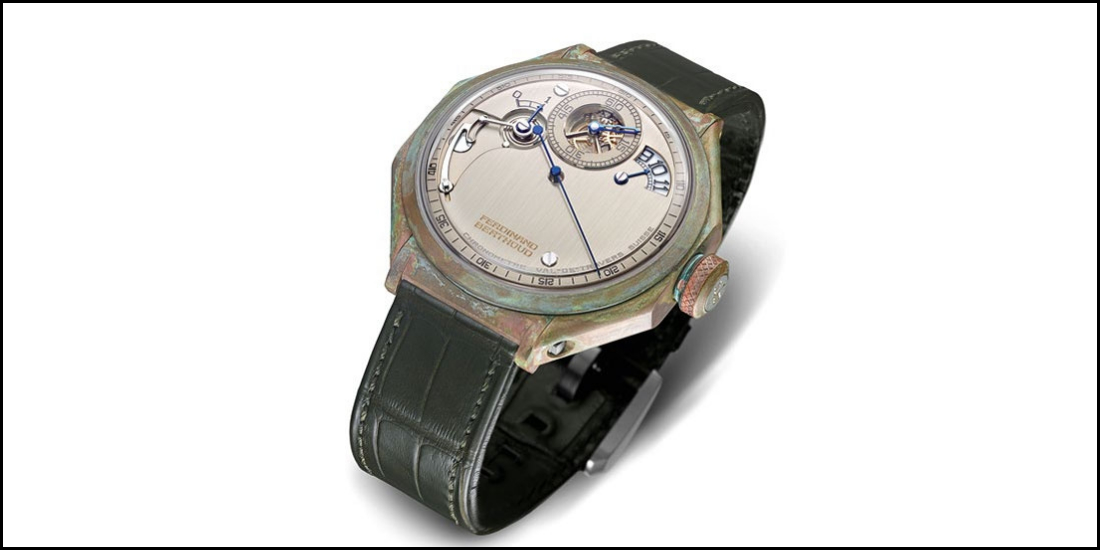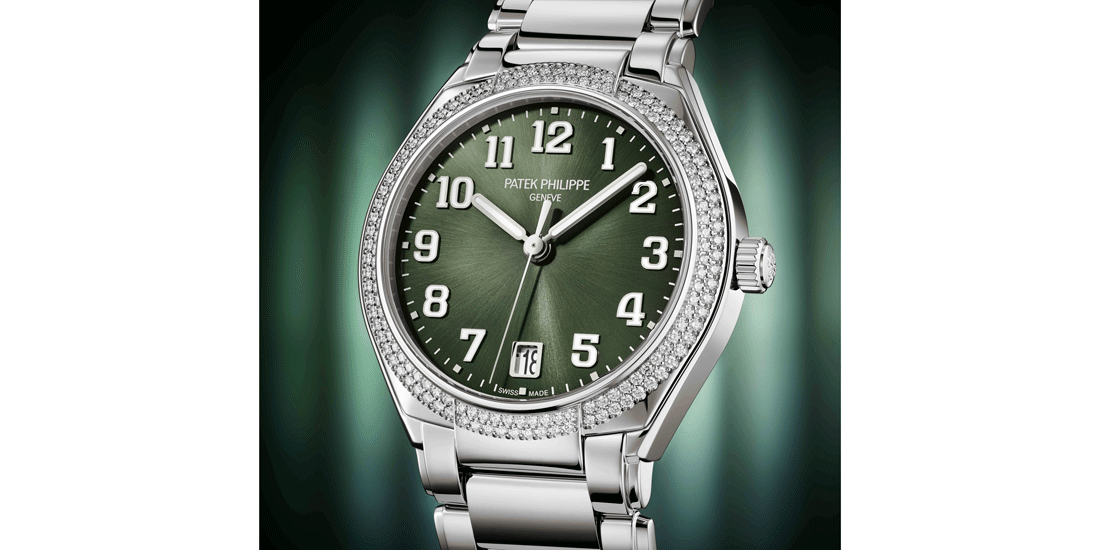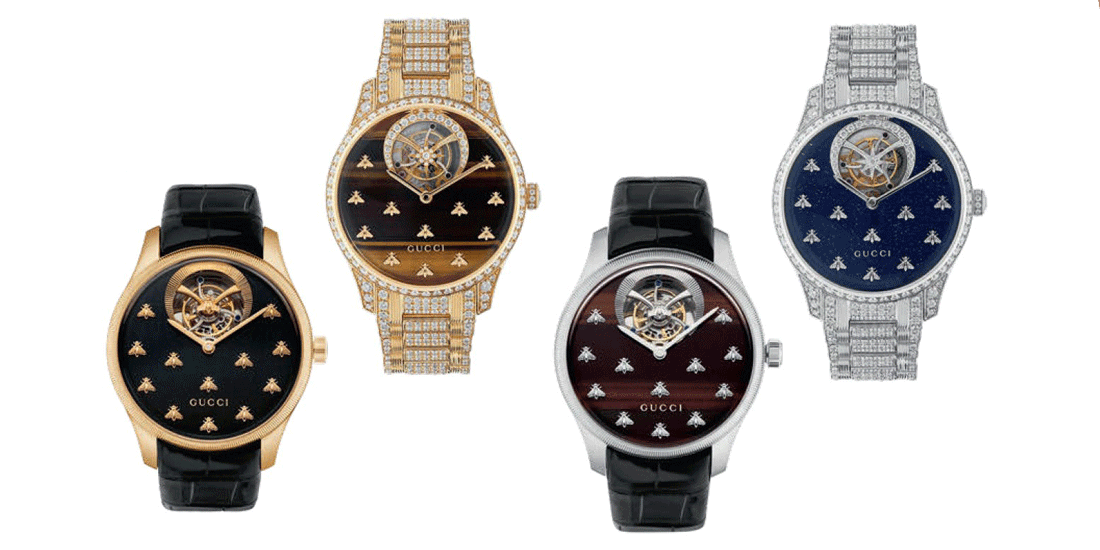
Chronométrie Ferdinand Berthoud Chronomètre FB 1R Edition 1785
CASE: oxidized and stabilized bronze, domed sapphire crystal, two lateral portholes and caseback pane in transparent sapphire, water-resistant to 30m
SIZE: 44mm x 13.95mm
MOVEMENT: mechanical manual-winding, Caliber FB-T-FC.R-2, 1158 components, 53h power reserve, fusee-and-chain transmission system, constant force, tourbillon, COSC chronometer certification
FUNCTIONS: hours appearing on disks in a regulator-type configuration, off-centered minutes, central seconds hand, powerreserve indicator
DIAL: satin-brushed nickel silver
STRAP: patinated chestnut brown alligator leather with a titanium pin buckle
Sailing the high seas owes everything to the bronze marine chronometers of navigation’s golden age. On August 1st 1785, the Count of Lapérouse set sail with two ships, 220 men and five chronometers by Ferdinand Berthoud, Watchmaker and Mechanic by appointment to the French King and Navy. For two years, he charted half of the world with the help of his sextant and chronometer navigating instruments. The latter were made of bronze, a sturdy and stable material that can nonetheless also become oxidized – as confirmed by the sextant recovered on the spot where Lapérouse’s ship foundered, in the South Pacific. This was the tool that inspired the theme of the Chronomètre FB 1R Edition 1785. This chronometer, endowed with a tourbillon and constant force ensured by a fusee-and-chain transmission system, has an octagonal case resembling a marine chronometer as glimpsed between the spokes of its gimbals. It features an architecture similar to that used by Berthoud and a regulator-type display. The 1785 edition is a series of five watches, all made of bronze. Each has been oxidized using a different technique and yielding a distinct aesthetic result, ranging from yellow through classical green to deep chestnut brown. All these shades have been stabilized and are certified non-toxic. Each is unique in terms of its appearance and the approach behind it.






